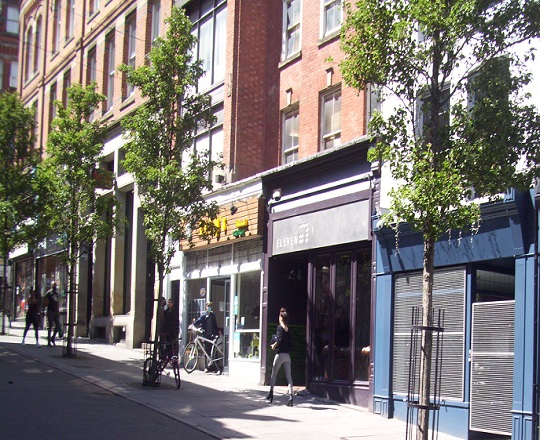Converting shops into homes

“Politicians pledging to save the high street are promising voters the impossible”.
These words were from a report from the influential think tank, the Social Market Foundation.
The report advocates “repurposing city and town centres into residential property, funded by local Councils”. For this to happen, they argue, the Government will need to write off Local Authority debts, currently standing at £80bn.
High Street shopping areas were already in decline before lockdown. The report goes on to say that more than 2/3rds of those working from home would like to continue to do so, and that just 5% of current commercial land would be enough for 800,000 new homes. The case for converting some shops into homes seems compelling.
Converting shops into homes is not a new idea, and there was a programme of converting unused space, usually over the top of shops known as the “living over the shop” programme throughout the 1990’s. It was most successful in towns.
Living in city centres is also becoming more popular. In 1990 (when city centres populations were at their lowest) just 500 people lived in the centre of Manchester, a good proportion of them publicans. Today there are 60,000. Major cities have seen modern high density developments, including new blocks of flats. In the larger cities the majority of those living in the city centre are aged 25 – 34, and over one third have a degree. Only a small proportion are families with children, although small and medium sized city centres are more likely to house families. There is even a growing number of people “out commuting” – traveling from the city centres to jobs in the suburbs or out of town.
Residents of larger cities choose to live there to be close to shops and facilities and to be close to work. In cities like Newcastle, Nottingham and Sheffield much of the growth of city centre living is among students – all three of those cities have Universities with city centre campuses.
The growth of people living on or around the High Street has been slower in large towns and small cities, such as Doncaster or Swindon. There are in any case more people living in traditional (often Victorian) housing close to the centres, which are much smaller. There are also fewer jobs for professionals, who might choose city centre living close to work.
However many shops in towns are relatively easy to convert, although many Planning Departments have resisted changes of commercial property to residential, fearing a loss of jobs. Some also require the provision of parking facilities, which is unrealistic in many cases.
City centre living might enhance the lifestyle of many, although few would want to live over a pub, restaurant, hot food takeaway or nightclub, so any changes would need to be undertaken carefully.
The Government seems to have considered the housing shortage by talking to the house builders. They say that they want looser planning restrictions so that they can build where they want to build, on easily developed green field sites, especially in rural areas. That does little to help those in housing need, causes a loss of agricultural land and often destroys the appearance of villages and the countryside. Maybe converting city centre properties to house the large number who work there in bars, shops and hotels makes more sense.

